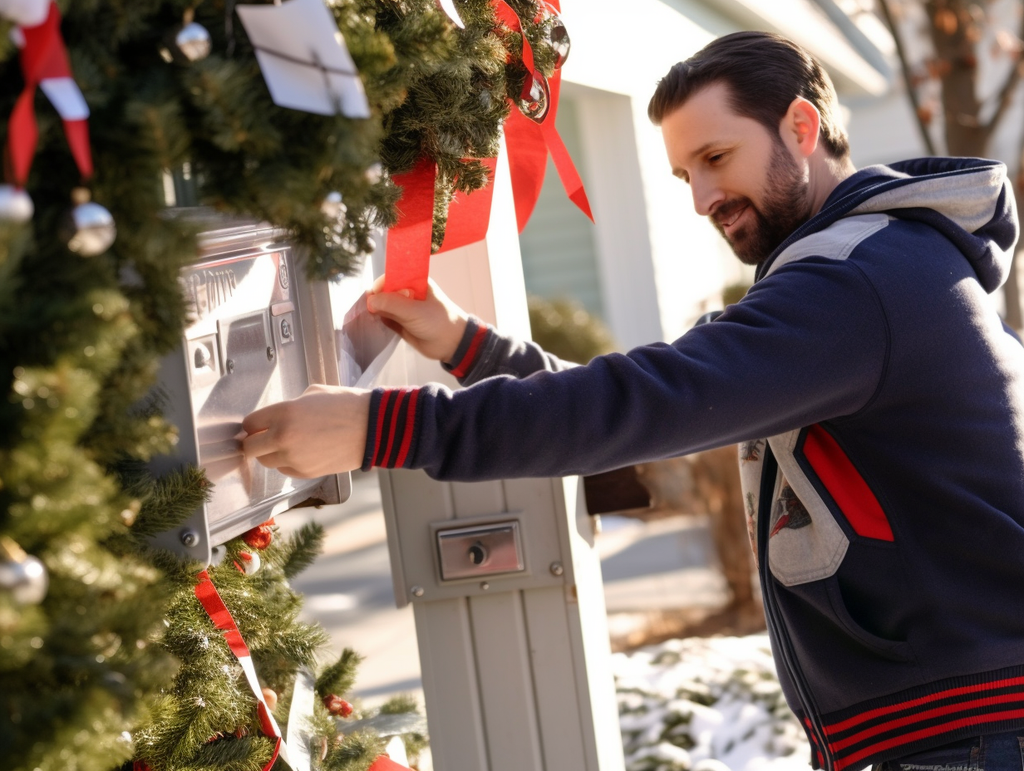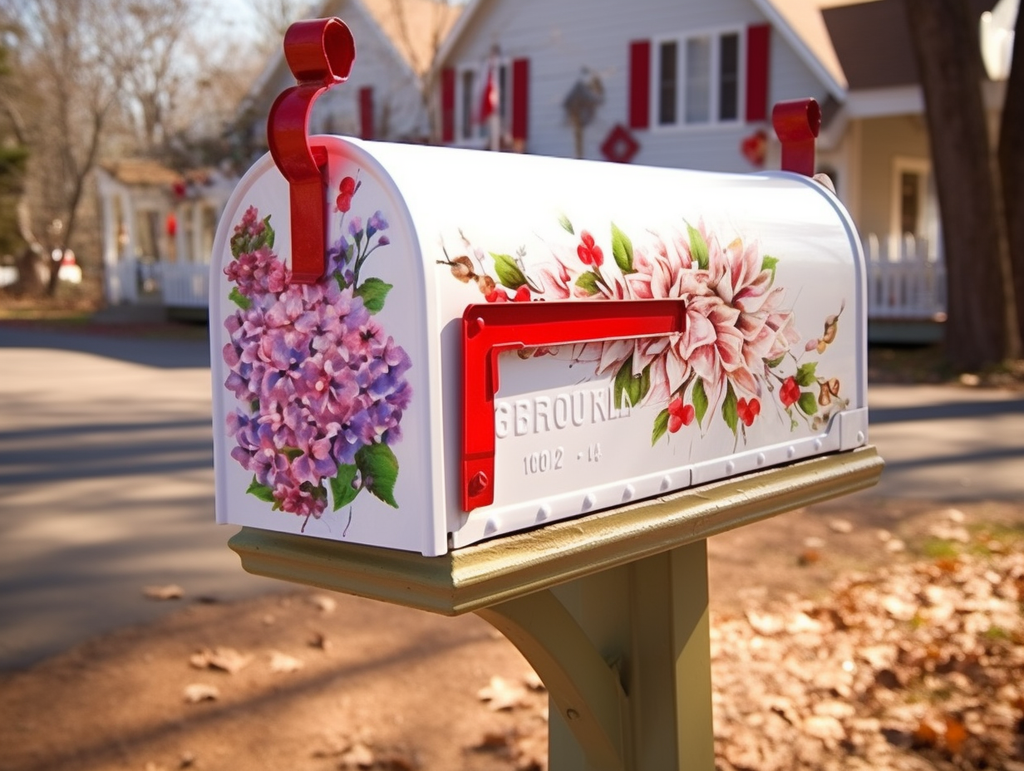The holiday season is upon us, and you might be thinking about sending out Christmas cards to your loved ones.
Addressing envelopes for those festive greetings might seem like a simple task, but paying attention to certain details can make all the difference in making sure your cards reach their intended recipients.

With so many friends and family members on your mailing list, it's crucial to make the process of addressing envelopes both efficient and organized.
From choosing the right salutation to double-checking the recipient's information, following a set of tried-and-tested steps will help you add a touch of personalization to your holiday cards while ensuring proper delivery.
Key Takeaways
- Know your audience and gather essential supplies before addressing envelopes
- Write the recipient's information clearly and choose suitable salutations
- Consider unique mailing situations and double-check the accuracy of the information
Understanding Your Audience
Identifying Familiarity Level
When addressing Christmas card envelopes, consider the relationship you have with your recipients. Are they close friends or distant acquaintances?
For people you're close to, using their first names is perfectly fine. On the other hand, with acquaintances or professional contacts, it's best to use their full names, titles, or the family name.

Recognizing Cultural Preferences
Keep in mind the cultural preferences of your recipients. Some might prefer traditional holiday greetings, while others may appreciate a more secular approach.
To cater to diverse preferences, you can avoid explicitly religious messages and stick to universally appealing wishes. This ensures that everyone feels included during the festive season.
Understanding your audience ensures that your Christmas cards are well-received by their recipients.
Remember to acknowledge your relationship with them and be sensitive to cultural preferences, and your cards will undoubtedly bring joy and warm wishes during the holiday season.

Essential Supplies Needed
Choosing the Right Envelope
When sending holiday greetings, picking the perfect envelope is important. Start by considering size and color—choose an appropriate size for your Christmas card and a festive color that complements it.
Coordinating your card and envelope shows attention to detail. Opt for envelopes with a liner to add a touch of elegance.
Make sure your chosen envelopes have a self-adhesive closure, or purchase some envelope glue.
Selecting a Suitable Pen
The next step is finding a pen that enhances your envelopes. A high-quality pen will allow your writing to look smooth and polished.
Look for one with an ink color that works well with the envelope's hue.
Pens with metallic ink like silver or gold add a holiday sparkle to your envelopes. For a more traditional look, go with dark blue or black.
Test the pen on scrap paper before you start, ensuring the ink flows consistently and doesn't smudge.

Writing the Recipient's Information
Incorporating Full Names
When addressing Christmas card envelopes, it's important to include the recipient's full name. You may be tempted to shorten it or use nicknames, but let's keep it classy and use their proper titles.
Take the extra second to find out if Aunt Susan prefers "Sue" or "Susan."
Adding Detailed Addresses
Now, it's time to make sure those cards make it to the right mailbox. Double-check each recipient's mailing address, including apartment numbers and street abbreviations.
Also, remember to include the correct zip code for a smooth delivery. who wants a Christmas card in February? Not your stylish friend Karen, that's for sure!
A quick recap for you:
- Use full names and proper titles
- Check street abbreviations, apartment numbers, and zip codes
Just keep these guidelines in mind, and you'll be a holiday-card-addressing maven in no time!

Choosing the Appropriate Salutation
When addressing Christmas card envelopes, it's important to choose the right salutation. Let's explore some common options to find the perfect greeting for your recipient.
Formal Greetings
Ah, the more traditional route! If you're sending cards to acquaintances, work colleagues, or people you don't know well, you may want to use a more formal greeting.
Here are some examples:
- Mr. and Mrs. Johnson - This classic choice is perfect for married couples.
- Dr. Smith and Mr. Smith - When one person has a professional title, be sure to include it.

Remember always to use the individual's full name, which shows respect and care for the person receiving your Christmas card.
Informal Greetings
For friends, family, and close contacts, you might want to opt for a more casual approach. Here are some laid-back examples:
- The Johnson Family - Nothing says "we're tight-knit," like referring to the whole family as one cheerful unit.
- Bill and Linda - Why not go for the first-name basis? After all, they're practically family!
Just be sure the recipient would appreciate a more casual tone, as every person's preferences may vary.

Implementing Special Mailing Considerations
Handling International Mail
When sending Christmas cards overseas, it's essential to consider international postage requirements. You want your holiday greetings to arrive on time and without any hassle.
Keep the following points in mind:
-
Address Format: Conform to the destination country's address format. You can find the specific format on postal service websites or consult online resources.
-
Postage Rates: Ensure you have the correct postage to avoid delays. Rates may vary based on the destination and card weight.
- Mailing Deadlines: Start mailing your international cards early, as shipping times vary. Check postal service websites for specific deadlines and send accordingly.

Addressing Military Personnel
Sending Christmas cards to military personnel requires additional attention to detail. It's important to show your gratitude while adhering to the military's mailing protocols.
Here's what you need to know:
- Address Format: Use the recipient's full name, rank, and unit without punctuation. Line 2 should contain the APO/FPO designation followed by the nine-digit ZIP code, while Line 3 should read "UNITED STATES."
For example:
SGT John Doe
APO AE 09316-9999
UNITED STATES
-
Restrictions and Prohibited Items: Be aware of restrictions specific to military mail. Don't include any prohibited items in the card envelope. Consult the military postal service's guidelines for a comprehensive list.
- Shipping Deadlines: Military mail may take longer to arrive. Make sure to check and adhere to the mailing deadlines set by the military postal service.
Rechecking Information Accuracy
Addressing Christmas card envelopes is a delightful task. To ensure a smooth delivery, always double-check the accuracy of the recipient's address.
First, verify the names and spellings - nobody wants their name misspelled. A quick look through your contacts or a friendly inquiry can help you avoid awkward errors.
Check the house number and street name. Sometimes, people move unexpectedly, so confirming this information goes a long way.
Inspect the city, state, and ZIP code details. Accidentally transposing numbers or using outdated ZIP codes can result in return-to-sender or delayed mail.
For international mail, double-check the country and its specific postal requirements. Sending holiday cheer across borders has some guidelines to follow.
A helpful tool is the USPS address lookup. Use it to confirm addresses and ensure proper formatting so your cards reach their destination.
Keep your mailing list updated throughout the year. Whenever you come across address changes, add them immediately to avoid future hassles.

Final Touches
Proper Sealing Practice
When it's time to seal your Christmas card envelopes, you want to ensure they're secure. Choose a high-quality adhesive so your precious cards stay tucked inside.
Nobody likes a sticky situation! Using a wet sponge or a glue stick can help you avoid licking dozens of envelopes.
Your tongue will thank you later.
Postage Application
Remember to apply the correct postage to each envelope! Check the United States Postal Service rates, as they can change.
Size matters—larger or heavier cards may need extra postage. Keep in mind special embellishments, like ribbons or charms, as they can make a difference.
- First-class stamps are suitable for standard-sized cards and letters.
- Additional postage might be required for oversized, irregular shapes or heavier cards.
A festive holiday stamp can add a bit of charm. With all that taken care of, your Christmas cards are ready to bring cheer to your loved ones!

Frequently Asked Questions
What is the etiquette for addressing Christmas cards to families?
When addressing Christmas cards to families, it's best to use the parents' names on the envelope, like "Jane and John Smith." If you want to include the children, you can write "The Smith Family" or "Jane, John, and Family."
How should I address a Christmas card envelope to a couple?
To address a Christmas card envelope to a couple, use both their names. For example, "Jane Doe and John Smith."
If they share the same last name, you can write "Mr. and Mrs. Smith" or "John and Jane Smith."

What are some creative ways to address Christmas card envelopes?
Get festive and let your imagination run wild! You can use colorful pens, fun stickers, or even draw holiday-themed doodles.
Try using calligraphy or a unique font to make the address stand out.
How do I address Christmas card envelopes for families with different last names?
For families with different last names, list both names on the envelope. For example, "Jane Doe and John Smith."
If there are children, you can include them by writing "Jane, John, and Family" or listing their names after the parents.

Should I include children's names when addressing Christmas cards?
It's up to your personal preference. Including children's names can make the card feel more personal and show you're thinking of the whole family.
If you choose to list them, simply add their names after the parents' names.
Is there a recommended format for addressing Christmas card envelopes?
The standard format is to use a formal title, such as "Mr." or "Mrs.," followed by the recipient's name(s). Keep the address centered and use a clear, legible font or handwriting.
Double-check your spelling and make sure to include a return address in case there are any delivery issues.
Affiliate disclosure: We only endorse things we’ve personally curated and have bought or would buy ourselves. If you make a purchase using our referral links, we may receive a commission. However, there’s no extra cost to you.
